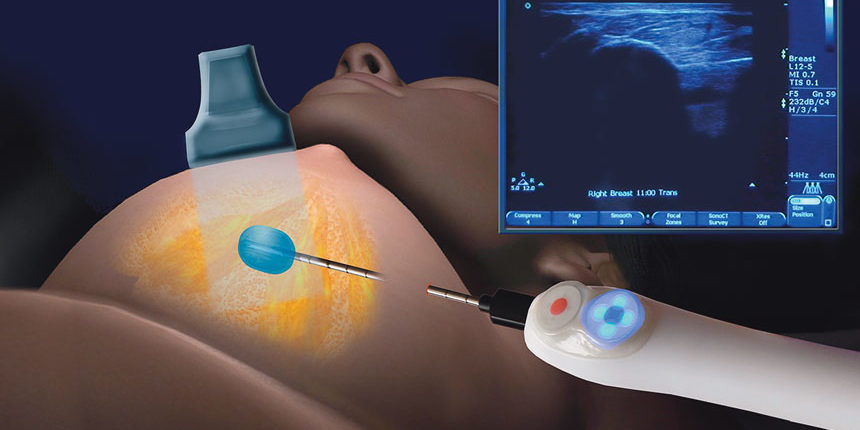Health+
Treating Benign Breast Tumors Without Surgery

Southcoast's Breast Program is the only one in the region to offer cryoablation
After non-surgical removal of a benign breast tumor, Sandra Benevides returned immediately to her normal activities.
When Fall River resident Sandra Benevides was diagnosed with a non-cancerous lump in her breast, she was happy to learn that her treatment options included cryoablation, a non-surgical outpatient procedure. Southcoast has the only breast care program in the region to offer this procedure.
Non-cancerous tumors like Sandra’s, called fibroadenomas, can occur in women of any age, but are most common in those 18 to 35 years old, says surgical oncologist Maureen Chung, MD, PhD. She recommends removing them to alleviate discomfort, to keep a growing tumor from deforming the breast, or if a patient is planning pregnancy. In cryoablation, which is FDA-approved, an ultrasound-guided probe is inserted into the fibroadenoma through a tiny incision. The probe freezes the tumor, which is then gradually reabsorbed into the body.
While surgery is also a safe and effective treatment, says Dr. Chung, the cryoablation option can offer major advantages, including:
- A short, in-office procedure
- No general anesthesia
- Less blood loss and pain
- Less scarring (often unnoticeable)
- No effect on future mammograms
- Immediate return to activities
The prospect of an immediate return to work and family was a big plus for Sandra, 42, who is a mother of two and works as a computer engraver. The procedure took about one hour at Southcoast’s Breast Center in Dartmouth, and Dr. Chung and the Breast Center team made sure she was comfortable, Sandra says. “They kept me informed step-by-step about what was happening and made me feel like I was part of the team.”
Sandra adds that she felt little discomfort. “It was mostly pressure, nothing that I couldn’t tolerate.” Some initial swelling and soreness was easily alleviated with over-the-counter pain relievers and gone within two days, she adds.
In six months, she’ll have a follow-up visit to be sure the lesion has been completely absorbed. “The whole experience was phenomenal,” says Sandra. “I highly recommend this procedure.”
